F for Fake (French: Vérités et mensonges, "Truths and lies") is a 1973 docudrama film co-written, directed by, and starring Orson Welles who worked on the film alongside François Reichenbach, Oja Kodar, and Gary Graver. Initially released in 1974, it focuses on Elmyr de Hory's recounting of his career as a professional art forger; de Hory's story serves as the backdrop for a fast-paced, meandering investigation of the natures of authorship and authenticity, as well as the basis of the value of art. Loosely a documentary, the film operates in several different genres and has been described as a kind of film essay.
| F for Fake | |
|---|---|
Theatrical poster by Rene Ferracci | |
| Directed by |
|
| Produced by |
|
| Written by |
|
| Starring |
|
| Music by | Michel Legrand |
| Cinematography |
|
| Edited by |
|
| Distributed by | Planfilm Specialty Films |
Release date | 1973 (San Sebastián Film Festival) |
Running time | 88 minutes |
| Country | France Iran West Germany |
| Language | English French Spanish |
| Box office | 182,857 admissions (France) |
Far from serving as a traditional documentary on Elmyr de Hory, the film also incorporates Welles's companion Oja Kodar, notorious "hoax-biographer" Clifford Irving, and Orson Welles as himself.
In addition to the 88-minute film, in 1976 Welles also shot and edited a self-contained 9-minute short film as a "trailer", almost entirely composed of original material not found in the main film itself.
Screenplay
Orson Welles was hired to edit a documentary by François Reichenbach about the art forger Elmyr de Hory. The film grew over time to encompass de Hory, as well as de Hory's biographer Clifford Irving, who was revealed to be a forger himself. Welles used these circumstances to produce a meditation on the nature of fakery.
Several storylines are presented in the film, including those of de Hory, Irving, Welles, Howard Hughes and Kodar. About de Hory, we learn that he was a struggling artist who turned to forgery out of desperation, only to see the greater share of the profits from his deceptions go to doubly unscrupulous art dealers. As partial compensation for that injustice, he is maintained in a villa in Ibiza by one of his dealers. What is only hinted at in Welles's documentary is that de Hory had recently served a two-month sentence in a Spanish prison for homosexuality and consorting with criminals. (De Hory would commit suicide two years after the initial release of Welles' film, on hearing that Spain had agreed to turn him over to the French authorities.)
Irving's original part in F for Fake was as de Hory's biographer, but his part grew unexpectedly at some point during production. There has not always been agreement among commentators over just how that production unfolded, but the now-accepted story is that the director François Reichenbach shot a documentary about de Hory and Irving before giving his footage to Welles, who then shot additional footage with Reichenbach as his cinematographer.
In the time between the shooting of Reichenbach's documentary and the finishing of Welles', it became known that Irving had perpetrated a hoax of his own, namely a fabricated "authorized biography" of Howard Hughes (the hoax was later fictionalized in The Hoax). This discovery prompted the shooting of still more footage, which then got woven into F for Fake. Interweaving the narratives even more, there are several pieces of footage in the film showing Welles at a party with De Hory, and, at one point, De Hory even signs a painting with a forgery of Welles' signature. Some of Hughes' career is outlined in the form of a parody of the "News on the March" sequence in Citizen Kane. Welles also draws parallels between the De Hory and Irving hoaxes and his own brush with early notoriety by including a recreation of part of his 1938 War of the Worlds radio drama, which had simulated a newscast about a Martian invasion and sparked panic among some listeners.
The story about Kodar, her grandfather, and Picasso and some forger paintings that the grandfather supposedly made is presented at the end of the film before Welles reminds the viewer that he only promised to tell the truth for an hour and that "for the last 17 minutes, I've been lying my head off." In the commentary to the Criterion Collection DVD release of F for Fake, Kodar claims the idea for this segment as her own. She also claims credit for the movie's opening sequence, which consists of shots of a miniskirt-clad Kodar walking down streets while rubbernecking male admirers (unaware that they are being filmed) stop and openly stare. This sequence is described by Kodar as inspired by her feminism; in his narration, Welles claims the footage was originally shot for an unrelated production.
The film opens with Welles performing magic tricks for some children while Kodar watches nearby. Welles quotes Robert-Houdin to the effect that a magician is just an actor. Welles promises that for the next hour everything in the film will be based on solid fact. Kodar is then shown strolling around a street in a miniskirt while being ogled by the men on the street. Welles reveals the footage is taken from another experiment about girl-watching, where Kodar deliberately drew attention to herself and the men were unaware they were being filmed. Welles says her story will continue later in the film, and then narrates the story of Elmyr de Hory, an art forger who sold many fake paintings to museums and collectors all over the world. Elmyr is shown throwing a dinner party at his home in Ibiza and being feted by European society, although he dances around the question of whether he is guilty or not. One of those filmed is Clifford Irving, who had published a biography of Elmyr called Fake, and later in a notorious scandal was revealed to have been the forger of Howard Hughes's diary. Welles discusses the irony of Irving commenting on Elmyr's forgery while having committed a version of it himself. Irving and Elmyr tell about the art dealers who were fooled by the forgeries, and Welles considers the question whether this means art dealers and appraisers are fake also.
Welles presents more of Irving's story of having had secret contact with Hughes, and the odd stories of Hughes's behavior that may or may not have been true. He wonders if believing such stories makes a person credulous or not, and questions the true wisdom of so-called experts, who verified Irving's forgery as authentic. Reichenbach is shown telling how Elmyr provided him with several paintings of questionable authenticity, but the art dealers he gave them to were willfully blind to it. Welles notes that Elmyr doesn't even own the house he lives in; it's provided for him by an art dealer. Welles recounts his own past use of fakery: how he got a job in Ireland by falsely claiming to be a famous New York actor, and how his broadcast of War of the Worlds made deliberate use of fake news to enhance the story. He also notes the coincidence that his first film Citizen Kane was originally going to be a fictionalized version of Howard Hughes.
Irving describes how Elmyr was nearly destitute when younger and subsisted in America by making and selling forgeries that were indistinguishable from the real works, while remaining one step ahead of the law through frequent relocations. He finally moved to Ibiza, but was not prosecuted for lack of witnesses to the actual forging, as well as the scandal that might be aroused by revealing the depth of the art market's complicity in the deception. Elmyr insists he never signed any forgery, and Welles wonders whether, given the fact that all art eventually falls away to ruin, a signature truly matters to any art work. He illustrates the point by shots of the cathedral of Chartres, pointing out that the names of the men who created the magnificent building and the sculptures which adorn it are unknown. They did not sign their work, but it has endured.
Welles finally presents Kodar's story: she holidayed in the same village as Picasso, who noticed her and painted 22 pieces with her as the model. She insisted she be allowed to keep the paintings, but later when Picasso read about an acclaimed exhibit of 22 new pieces of his, he flew there in a rage, only to discover the pieces were all forgeries. Kodar took Picasso to her grandfather, the forger, who defended his work with pride while Picasso angrily demanded the paintings back. This dialogue is presented by Welles and Kodar re-enacting the parts of the grandfather and Picasso respectively. Welles then confesses that he had promised everything in the "next hour" was true, and that hour had already passed. He admits the entire story of Kodar, her grandfather, and Picasso was made up. He apologizes, quotes Picasso's statement that art is a lie that makes us see the truth, and bids the audience good night.
- Orson Welles – Himself
- Elmyr de Hory – The Art Forger
- Oja Kodar – The Girl
- Joseph Cotten – Special Participant
- François Reichenbach – Special Participant
- Richard Wilson – Special Participant
- Paul Stewart – Special Participant
- Mark Forgy – Assistant to Elmyr de Hory
- Alexander Welles – Special Participant (as Sasa Devcic)
- Gary Graver – Special Participant
- Andrés Vicente Gómez – Special Participant
- Julio Palinkas – Special Participant
- Christian Odasso – Special Participant
- Françoise Widhoff – Special Participant
Others
- Peter Bogdanovich – Special Participant (voice)
- William Alland – Special Participant (voice)
- Jean-Pierre Aumont – Himself (uncredited)
- Laurence Harvey – Himself (uncredited)
- Clifford Irving – Himself (uncredited)
- Nina van Pallandt – Herself (uncredited)
- Rome, Italy – Girl-watching sequence
- Ibiza, Spain – 16 mm elements from the original Reichenbach documentary
- Paris, France – Gare d'Austerlitz, Champ de Mars, art gallery on left bank, La Méditerranée seafood restaurant
- Los Angeles – The Beverly Hills Hotel – The ham sandwich of Howard Hughes
- Chartres Cathedral – France
- Orvilliers, France – Orson Welles and Oja Kodar house—editing-room scenes, set for various indoor scenes
- Houdan, France – Oja and Picasso story
- Paris-Orly Airport – South terminal terrace and main hall
F for Fake was not released in the USA until 1976. When it finally came out, Welles produced a preview "trailer" for it, which was effectively a wholly original 9-minute film, shot and edited in a similar style to the film itself. Apart from some very brief split-second camera shots, the entire film is a self-contained short containing original material starring Welles, Gary Graver and Oja Kodar. The trailer has subsequently been restored in colour, and is included as an extra on some DVD versions of the film.
F for Fake faced widespread popular rejection. Critical reaction ranged from praise to confusion and hostility, with many finding the work to be self-indulgent and/or incoherent. F for Fake has grown somewhat in stature over the years. In that the film embraces everything from self-conscious notation of the film process to ironic employment of 1950s-era B movie footage (Earth vs. the Flying Saucers), Welles thought he was creating not so much a documentary as a "new kind of film," as he once told writer Jonathan Rosenbaum. F for Fake is now sometimes referred to as a "film essay." It currently holds an 88% rating on Rotten Tomatoes from 49 critics.
This section needs additional citations for verification. (July 2014) (Learn how and when to remove this template message) |
According to some reviews, the F for Fake mash-up has possibly paved the way for the modern "attention-deficit" style of editing. More likely, Welles was influenced by those that came before, such as the French New Wave director Jean Luc Godard and Dadaist filmmakers like René Clair who used editing to alternately build and deconstruct. What is unique to the film is the concept of the unreliable narrator — a key subject of the film itself, which at many points shows Welles sitting at an editing controller, as he narrates and draws self-reflexive attention to the problems with veracity in life and filmmaking.
Watch movie F For Fake online on Amazon
Watch movie F For Fake online
Watch The Movie On PrimeDarling Full HD Movie Download
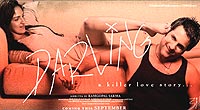
Raja (1975) Full HD Movie Download
.jpg)
Love 86 Full HD Movie Download
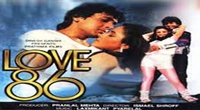
Teen Chor Full HD Movie Download

Paapi Devta Full HD Movie Download
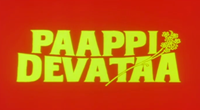
Maha Pawan Tirth Yatra (1975) Full HD Movie Download
.jpg)
Iqbal Full HD Movie Download
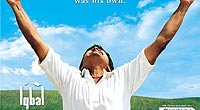
Chaand Ka Tukdaa Full HD Movie Download
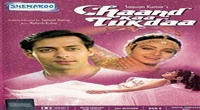
Amar Deep Full HD Movie Download
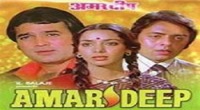
Aag Ka Gola Full HD Movie Download
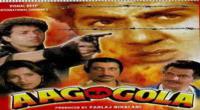
Nai Rat Nai Bat Full HD Movie Download
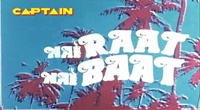
Doragariki Donga Pellam Full HD Movie Download
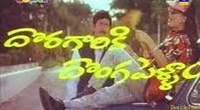
Shavukaru Full HD Movie Download
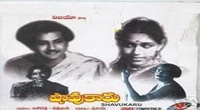
Dupe Dupe Dupe Full HD Movie Download
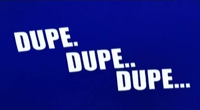
Shalabam Full HD Movie Download

Bhama Kalapam Full HD Movie Download

Eenati Bandham Yenatido Full HD Movie Download
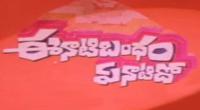
Pranam Full HD Movie Download
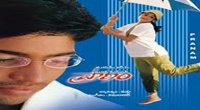
Manasa Full HD Movie Download
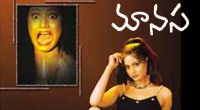
Ranabheri Full HD Movie Download
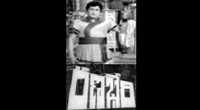
Rambha Neeku Urvasi Naaku Full HD Movie Download

Download latest Movie from bollywood
- 1> baaghi 3
- 2> THE SKY IS PINK MOVIE FULL STORY AND REVIEW
- 3> Luka Chuppi
- 4> TO ALL THE BOYS I’VE LOVED BEFORE
- 5> Kabir Singh
- 6> Street Dancer 3D
- 7> Simmba
- 8> Gone Girl
- 9> The Girl Who Lived
- 10> Ludo
- 11> DILWALE DULHANIA LE JAYENGE
- 12> GUILTY
- 13> The Godfather
- 14> Adventures of Rusty
- 15> Sooryavanshi
- 16> Satyameva Jayate 2
- 17> Thappad
- 18> Bhool Bhulaiyaa 2
- 19> KGFChapter 2
- 20> Mardaani 2
- 21> Pinjar
- 22> Shivaji maharaj
- 23> Ek Villian 2
- 24> Hungama 2
- 25> Divergent
- 26> Mumbai Saga
- 27> The Internship
- 28> HIT (telugu)
- 29> Panga
- 30> The perfect date
- 31> 16 December
- 32> Gopala Gopala (Telugu)
- 33> Brahmastra
- 34> Gangubai Kathiawadi
- 35> Manmadhudu
- 36> Nenu local
- 37> Mahanati
- 38> Shatamanam bavathi
- 39> Lagaan
- 40> After
- 41> MOM
- 42> Shamshera
- 43> Raguvaran BTech
- 44> Khakee
- 45> The villain
- 46> OM
- 47> Mr. perfect
- 48> Bueatifull mind
- 49> Hichki
- 50> Gabbar Singh
- 51> Jogi
- 52> Before Sunrise
- 53> Before Sunset
- 54> Before Midnight
- 55> The Big Bull
- 56> Top Gun: Maverick
- 57> The Purge
- 58> The Sky is Pink
- 59> Laxmmi Bomb
- 60> Sadak 2
- 61> Sufna
- 62> Prithviraj
- 63> PK
- 64> Coolie No 1(2020)
- 65> Black Widow
- 66> Dear Zindagi
- 67> Dil Bechara
- 68> PHIR HERA PHERI
- 69> WAR
- 70> Dostana
- 71> RRR: Roudram Ranam Rudhiram
- 72> Maidan
- 73> Dabbang 3
- 74> Chhalaang
- 75> life as we know it
- 76> SherShaah
- 77> Sandeep Aur Pinky Faraar
- 78> Event Horizon
- 79> 83
- 80> Radhe: Your Most Wanted Bhai
- 81> Gunjan Saxena: The Kargil Girl
- 82> Mr India
- 83> Vivah
- 84> Anokha Bandhan
- 85> Ghost
- 86> Bhoot: Part One - The Haunted Ship
- 87> Haseen Dilruba
- 88> Laal Singh Chaddha
- 89> Qismat
- 90> Rajput
- 91> Drive
- 92> Dil Chahta Hai
- 93> Dil Ki Baazi
- 94> Dil Ka Rishta
- 95> Teesri Manzil
- 96> Dil
- 97> Love Aaj Kal
- 98> Khaali Peeli
- 99> Bunty Aur Babli 2
- 100> Atrangi Re
- 101> Gulabo Sitabo
- 102> Jodi
- 103> Suraj Pe Mangal Bhari
- 104> Deewana
- 105> Attack
- 106> Sardar Udham Singh
- 107> Toofan
- 108> THE LOVEBIRDS
- 109> Jersey
- 110> Ginny Weds Sunny
- 111> Thalaivi
- 112> Shiddat
- 113> Angels vs Zombies
- 114> Koi Mil Gya
- 115> Thank God
- 116> Bhuj: The Pride of India
- 117> Hum Aapke Hain Kaun
- 118> The Platform
- 119> Bird Box
- 120> Roohi Afzana
- 121> Torbaaz
- 122> Nikamma
- 123> World War Z
- 124> Extraction
- 125> Train to Busan
- 126> Life of Pi
- 127> SHAADI MEIN JROOR AANA
- 128> Himmat Aur Mehnat
- 129> To All The Boys: P.S. I Still Love You
- 130> Mimi
- 131> Good Newwz
- 132> Shubh Mangal Zyada Saavdhan
- 133> Raabta
- 134> Harry Potter and the Philosopher's Stone
- 135> Harry Potter and the Chamber of Secrets
- 136> Chhapaak
- 137> War of the Worlds
- 138> Harry Potter and the Prisoner of Azkaban
- 139> Harry Potter and the Goblet of Fire
- 140> MURDER MYSTERY
- 141> Shakuntala Devi
- 142> Bachchan Pandey
- 143> Jayeshbhai Jordar
- 144> Sheer Qorma
- 145> Saina
- 146> 'O' Pushpa I hate tears
- 147> Kedarnath
- 148> MS Dhoni The Untold Story
- 149> Chhichhore
- 150> Badhaai Ho
- 151> Unstoppable
- 152> Oz the Great And Powerful
- 153> The Girl on the Train
- 154> Haathi Mere Saathi 2020
- 155> The Conjuring: The Devil Made Me Do It
- 156> Gandhi Se Pehle Gandhi
- 157> The Song of Scorpions
- 158> Srimanthudu
- 159> Hello Guru Prema Kosame
- 160> Beauty and The Beast
- 161> Black Panther
- 162> Charlie and the Chocolate Factory
- 163> Bole Chudiyan
- 164> Fidaa
- 165> Duvvada Jagannadham
- 166> Bruce Lee: The Fighter
- 167> Hyper
- 168> Yaara
- 169> Red (2020)
- 170> Shivam
- 171> That Is Mahalakshmi
- 172> Nishabdham
- 173> Aashram 2020 web series
- 174> Laxmii
- 175> Mismatched
- 176> STUDENT OF THE YEAR 2
- 177> NAIL POLISH
- 178> Ramprasad Ki Tehrvi
- 179> KAAGAZ
- 180> 12 o Clock
- 181> The Power
- 182> bolo hau
- 183> Tribhanga
- 184> JAMUN
- 185> Madam Chief Minister
- 186> Maasaab
- 187> Aadhaar
- 188> Tanhaji
- 189> Bhaagi 3
- 190> Bhootnath
- 191> MALANG
- 192> Jai Mummy Di
- 193> Haathi Mere Saathi 2021
- 194> Shakeela
- 195> Unpaused
- 196> Annayya
- 197> Vamsoddharakudu
- 198> Mrugaraju
- 199> Narasimha Naidu
- 200> Sankranti
- 201> Manasu Maata Vinadhu
- 202> Anjaane
- 203> Apaharan
- 204> Bachke Rehna Re Baba
- 205> Bewafaa
- 206> Roohi
- 207> Radhe
- 208> Zindagi Khoobsoorat Hai
- 209> Yeh Mohabbat Hai
- 210> Yeh Kya Ho Raha Hai?
- 211> The Tomorrow War
- 212> DehradunDiary
- 213> Meri Shaadi Karaoo
- 214> Matruu Ki Bijlee Ka Mandola
- 215> No One Killed Jesica
- 216> Aag Ka Goola
- 217> Eight Million Dollars
- 218> Three Hundred
- 219> Cats and Dog
- 220> Decoy
- 221> Gold Rush
- 222> You Have Got Mail
- 223> Final Destination three
- 224> Tofan
- 225> Jungle
Request for Download movie F For Fake
- Bollywood movies
- Latest Bollywood movies
- Download all bengali movies
- Download all bhojpuri movies
- Download all english movies
- Download all gujarati movies
- Download all hindi movies
- Download all kannada movies
- Download all malayalam movies
- Download all marathi movies
- Download all oriya movies
- Download all punjabi movies
- Download all tamil movies
- Download all telugu movies
- Bollywood action movies
- Bollywood adventure movies
- Bollywood animation movies
- Bollywood classical movies
- Bollywood comedy movies
- Bollywood crime movies
- Bollywood devotional movies
- Bollywood documentary movies
- Bollywood drama movies
- Bollywood family movies
- Bollywood fantasy movies
- Bollywood historical movies
- Bollywood history movies
- Bollywood horror movies
- Bollywood musical movies
- Bollywood mystery movies
- Bollywood mythological movies
- Bollywood patriotic movies
- Bollywood romance movies
- Bollywood romantic movies
- Bollywood sci-fi movies
- Bollywood social movies
- Bollywood spiritual movies
- Bollywood sports movies
- Bollywood suspense movies
- Bollywood thriller movies
- Bollywood war movies
- Hot actress list
- Hot gujarati actress list
- Hot tamil actress list
- Hot bhojpuri actress list
- Hot assam actress list
- Hot bihari actress list
- Hot jammu and kashmir actress list
- Hot gujarati actress list
- Hot haryana actress list
- Hot konkani actress list
- Hot marathi actress list
- Hot odia actress list
- Hot punjabi actress list
- Hot rajasthani actress list
- Hot kannada actress list
- Hot malayalam actress list
- Hot telugu actress list
- Hot tulu actress list
- Hot Actress list from Indian city
- Hot actress list from ahmedabad
- Hot actress list from alappuzha
- Hot actress list from bangalore
- Hot actress list from bangalore
- Hot actress list from bhopal
- Hot actress list from chandigarh
- Hot actress list from chennai
- Hot actress list from guwahati
- Hot actress list from hyderabad, india
- Hot actress list from indore
- Hot actress list from jaipur
- Hot actress list from kannur
- Hot actress list from kochi
- Hot actress list from kolkata
- Hot actress list from kollam
- Hot actress list from kottayam
- Hot actress list from kozhikode
- Hot actress list from lucknow
- Hot actress list from madurai
- Hot actress list from mangalore
- Hot actress list from mumbai
- Hot actress list from mysore
- Hot actress list from new delhi
- Hot actress list from patna
- Hot actress list from pune
- Hot actress list from thiruvananthapuram
- Hot actress list from thrissur
- Hot actress list from tiruchirappalli
- Hot actress list from vijayawada
- Hot actress list from visakhapatnam
- All Bollywood Movies
- Bollywood Celeb
- >Art Director
- >Audiography
- >Background Music
- >Banner
- >Choreographer
- >Cinematographer
- >Costume Designer
- >Dialogue Writer
- >Director
- >Distributor
- >Editor
- >Executive Producer
- >Hair Stylist
- >Lyricist
- >Music Director
- >Photographer
- >Playback Singers
- >Presenter
- >Producer
- >Production Company
- >Production Designer
- >Screenplay
- >Singer
- >Sound
- >Actor
- >Story Writer
- >Studio
- >Video Director
- >Miscellaneous
- >Publicity (pro)
- >Web Creator
- >Production Labs
- >Publicity Design
- >Publicity Stills
- >Writer
- >Miscellaneous Artists
- >Visual Effects
- >Reporter
- >Music Company
- >Shooting Studios
- >Picturised On
- >Line Producer
- >Co Producer
- >Asst Director
- >Casting Director
- >Cinematography
- >Choreography
- >Dialouge
- >Editing
- >Lyrics
- >Music
- >Story
- >Playback Singer Female
- >Playback Singer Male
- >Actor In A Comic Role (male/female)
- >Child Artiste
- >Ensemble Cast
- >Actor Popular Choice (male)
- >Actor Popular Choice (female)
- >Sa Re Ga Ma Pa Song Of The Year
- >Actor In Supporting Role
- >Actress In Supporting Role
- >Actor In Leading Role
- >Art Direction
- >Actress In Leading Role
- >Sound Recording
- >Costume Design
- >Special Effects
- >Action
- >Actor In A Negative Role
- >Lifetime Achievement Award
- >Cinematic Exellence (director)
- >Cinematic Exellence (male)
- >Cinematic Exellence (female)
- >International Male Icon
- >International Female Icon
- >Actor In A Supporting Role (male)
- >Actor In A Supporting Role (female)
- >Actor In A Comic Role
- >Playback Singer (male)
- >Playback Singer (female)
- >Most Promising Debut (female)
- >Most Promising Debut (male)
- >Most Promising Director
- >Sound Design
- >Lifetime Jodi
- >Marketed Film
- >Jury Award For Best Actor
- >Jury Award For Best Actress
- >Jury Award For Best Film
- >Jury Award For Best Director
- >Playback Singer(male)
- >Lifetime Acheivement Award (male)
- >Excellence Award
- >Jodi Award
- >Performer Of The Year
- >Presented By
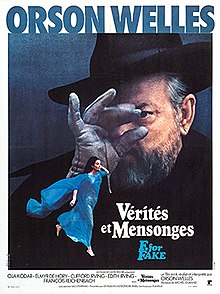 Story of movie F For Fake :
Story of movie F For Fake : 